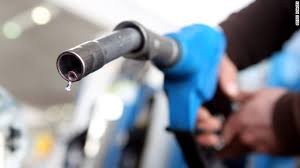Oklahoma drivers are paying less at the pumps, according to weekly statistics provided by AAA Oklahoma.
Lawton has the lowest average in the state at $1.92 a gallon, up two cents since last week. Shawnee has the second lowest average at $1.93, up a nickel in the past several days. Two other cities have lower gas prices including Enid, which is averaging $1.94 while McAlester is also at $1.94 a gallon.
The highest average belongs to Stillwater where gasoline is pumped at $2.06 a gallon. Altus is averaging the second highest at $2.04 a gallon with the third highest price point in Oklahoma City, where drivers are now paying two cents more than last week for an average of $2.00 a gallon. Tulsa’s average of $1.96 is up by four cents compared to one week ago.
The national average is $2.12 per gallon, which is the lowest price for this date since 2004.
West Coast drivers continue to pay the most for gasoline. Hawaii has the nation’s most expensive market for retail gasoline with an average of $2.70 a gallon. California is now at $2.62 a gallon followed by Washington at $2.58 a gallon and Alaska at $2.57 a gallon.
Twelve states are now below $2.00 per gallon. The nation’s lowest prices are found in South Carolina where the average is $1.82. Other states with the least expensive gasoline include Alabama at $1.86 a gallon, with Mississippi, Tennessee and New Jersey at $1.90 a gallon. Oklahoma has the eleventh-lowest price average at $1.99, with Texas and Louisiana maintaining an average of $1.97 a gallon.
A key contributing factor to the stalling slide in retail gas prices has been the increase in crude oil prices of the past several weeks. With gasoline supplies high and oil prices still relatively low, pump prices are likely to remain cheap through the rest of the summer and into the fall, according to AAA Oklahoma.
The national average could even fall back below $2.00 a gallon once the summer driving season ends. A major event such as a hurricane or increasing crude oil costs could offset this decline and temporarily drive pump prices higher.






